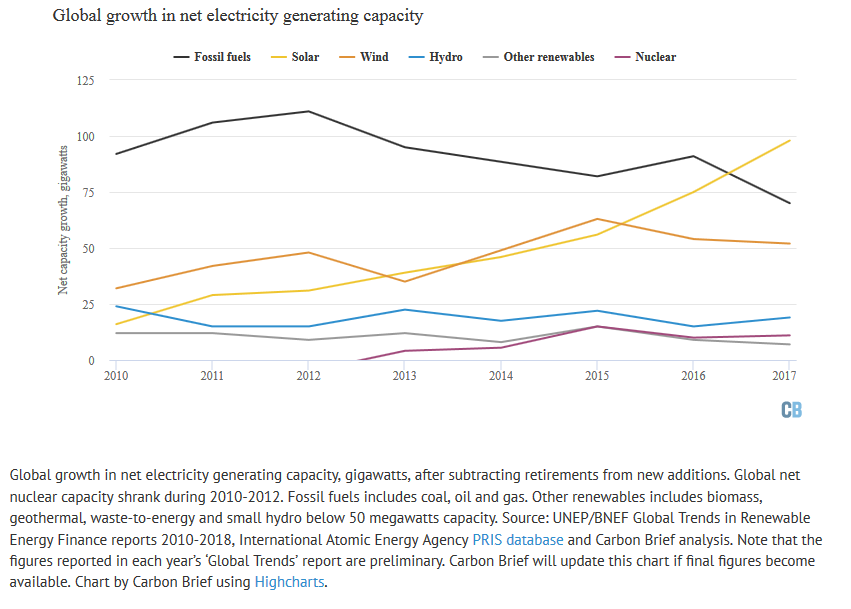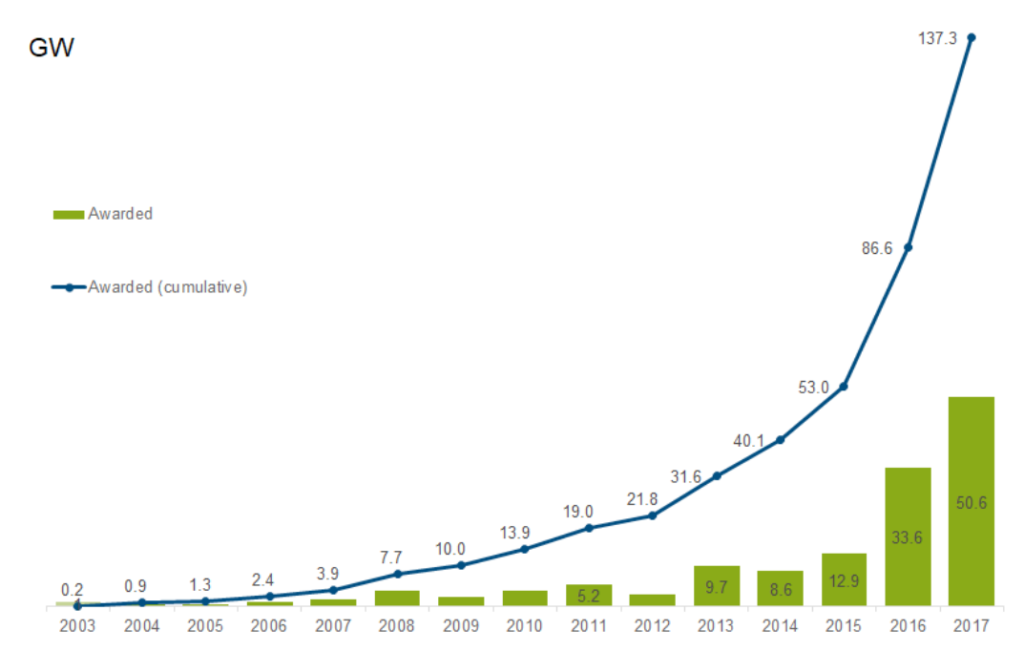Global solar capacity grew faster than fossil fuels in 2017, says report
https://www.carbonbrief.org/global-solar-capacity-grew-faster-than-fossil-fuels-2017-report

Global solar capacity grew faster than fossil fuels in 2017, says report
For the first time in 2017, global solar capacity grew faster than all fossil fuels combined, including coal, oil and gas-fired power stations.
That’s one finding of the latest annual report on global trends in renewable energy finance, from the UN Environment Programme (UNEP) and Bloomberg New Energy Finance (BNEF).
It shows renewables, excluding large hydro, made up three-fifths of net power capacity growth in 2017 and supplied a record 12% share of global electricity generation.
Global renewable investment held steady, with falling costs ensuring the same money bought record levels of new capacity. Within that, developing nations, led by China, claimed an ever-larger share of the total as investment fell steeply in several European countries.
(snip)
Despite contributing the majority of new capacity added in 2017, renewables, excluding large hydro, still only supplied 12% of global electricity generation – itself a record contribution that has doubled since 2010. This is because wind and solar have lower load factors than coal, gas or nuclear power plants, meaning each gigawatt of renewables generates less electricity each year.
(It’s worth noting that coal-fired power stations in the world’s largest users, from India to China to the US, currently generate less than 60% of the time. This is comparable to offshore windfarms, with load factors of 40-60%, though coal plants can operate on demand. Offshore windfarms generate electricity during 90-100% of hours but only occasionally reach maximum output.)
In order to reach internationally-agreed climate goals, low-carbon sources will need to supply much larger shares of the global electricity mix, with unabated coal generation falling to zero by 2045.
China story
The early growth in solar was driven by major EU economies, markets that quickly dried up as government subsidies were cut and reformed. Now, China is the engine of solar growth, installing more than half of all new capacity last year.
This shift is reflected in the trends in overall renewable investment around the world, shown in the map, below. China now accounts for 45% of renewable energy investment, excluding large hydro, spending a record $127bn in 2017. This makes it the world leader in clean energy investment.

There is a difference between Hope, Optimism, Courage and Confidence versus Pessimism, Gloom, Negativity and Cynicism.
Have a good Monday and have a good week.

